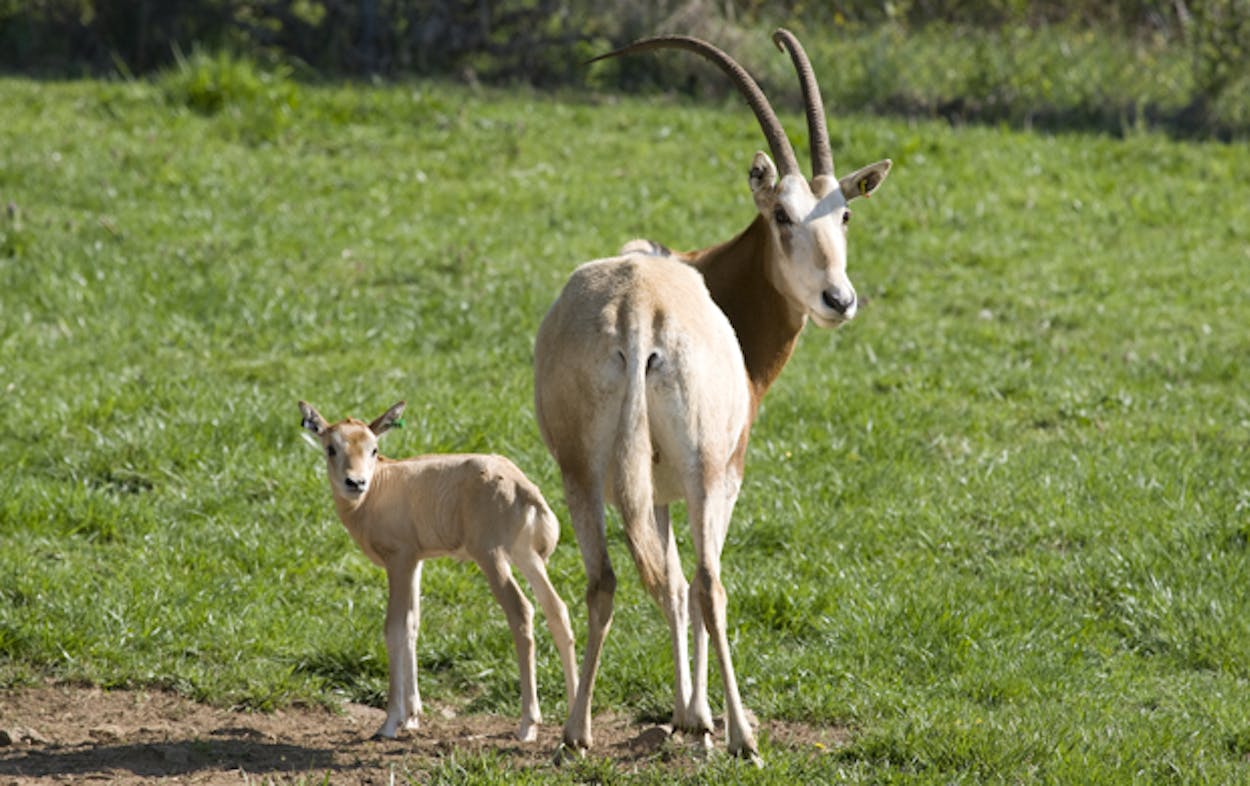If you were planning on hunting for scimitar-horned oryx this weekend, you’ll need to change your plans.
The oryx and two related African antelope—the dama gazelle and the addax—will be fully covered by the federal Endangered Species Act beginning Wednesday, putting an end to years of sport hunting on Texas’s exotic game ranches, Tony Freemantle reported in the San Antonio Express-News.
Hunters pay up to $5,500 to kill an oryx, prized for its long, distinctive curved horns. Ranchers say that without this cash, they will be forced to trim back their herds. “Without the unfettered ability to hunt, breed and trade these animals, ranchers say they will lose the economic incentive to maintain the herds, and whatever gains have been made in restoring their numbers will be lost,” Freemantle wrote.
At its core, this is “a bitter fight over conservation and how that intersects with private property rights and animal rights,” Freemantle wrote. Lara Logan recently visited a Texas game ranch for an episode of 60 Minutes, shining a light on the exotic hunting industry and spurring a mini-controversy about the practice.
Herds of scimitar-horned oryx once lived in great numbers throughout a large stretch of North Africa and were declared extinct in the wild in 2000. But the animals have thrived in Texas, their numbers growing from 32 in 1979 to more than 11,000 today, meaning that more oryx live here than anywhere else.
But some animal-rights groups against hunting “rather see the animals disappear than see them hunted,” Freemantle wrote. Connecticut-based Friends of the Animals, led by the aptly named Priscilla Feral, helped have the three species listed on the Endangered Species Act in 2005. Hunting of the animals on exotic game ranches was able to continue because of an exemption from the U.S. Fish and Wildlife Service. On Wednesday, that exemption is lifted, effectively ending the hunts for everyone who does not jump through hoops to obtain a permit.
Ahead of the ban, ranchers have stepped up hunting to thin out their herds. “In Kerrville, taxidermist Gary Broach normally sees maybe 10 to 12 scimitar-horned oryx come into his shop for processing and mounting in a year; in the last 28 days, 23 have come in for full-head mounting, and at least 17 others for lesser treatments,” Freemantle wrote.







